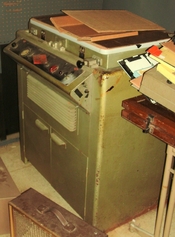Hello,
Can any of you point me towards resources for contact printing 4x5 on vc paper without an enlarger? I’m sure this has been covered before, but can’t seem to find a consolidated source, just fragments here and there. New to 4x5 and printing in general.
From what I’ve pieced together, you basically just need a dim lightbulb and a sheet of glass on top of the negative/paper. Azo style is out of my price range for now, so sticking with enlarger paper.
What paper size is typically used to contact print 4x5? Looks like 5x7 and 8x10 are the most common paper sizes, is it worth it to try to get 2 4x5 prints off of a 8x10 paper?
Can any of you point me towards resources for contact printing 4x5 on vc paper without an enlarger? I’m sure this has been covered before, but can’t seem to find a consolidated source, just fragments here and there. New to 4x5 and printing in general.
From what I’ve pieced together, you basically just need a dim lightbulb and a sheet of glass on top of the negative/paper. Azo style is out of my price range for now, so sticking with enlarger paper.
What paper size is typically used to contact print 4x5? Looks like 5x7 and 8x10 are the most common paper sizes, is it worth it to try to get 2 4x5 prints off of a 8x10 paper?


 .
.

